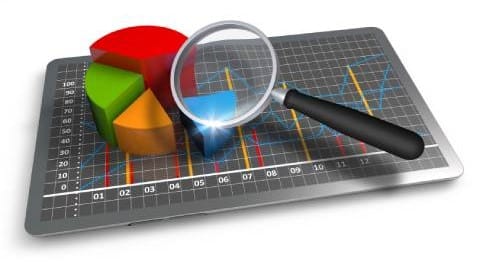Overcome All Your Fixed Asset Management Challenges with Our Scalable FAMS Solutions
Organizations use plenty of items on a day-to-day basis to execute their business processes. Fixed asset management is important for every organization because it helps in monitoring and managing assets using a systematic approach. Effective fixed asset management can improve the productivity and efficiency of your workforce which can uplift your business to a better position and increase your ROI. A fixed asset management system can reduce regulatory risks, assist in fraud prevention, and cut down unnecessary business expenditures.
Our robust fixed asset management system helps in tracking and recording all fixed assets and produces accurate, enterprise-standard, and dynamic reports. It ensures enhanced management of scattered assets of your organization, leading to improved accounting practices, maintenance, and upkeep of the asset records. Our FAMS solution is designed to offer seamless integrations with a diverse range of applications and business modules of any organization or entity.

Why Is It Important to Manage Your Assets?
It is important to control and manage your company’s assets
For Accountability
To ensure accountability of resources allocated to various departments and individuals
To Reduce Unnecessary Expenditures
You’re likely to make a lot of unnecessary procurement of assets if you aren’t aware of what your organization already has
For Insurance
To ensure that you’re paying the most relevant and accurate premiums
Comprehensive & Accurate Reporting
Proper and accurate assets reporting keeps track of the asset depreciation to be charged by the organization to different departments.
Other common reasons for managing your company’s assets include litigation, disaster management, tax benefits via depreciation, leasing control, real-time monitoring, and maintenance.
Key Benefits of Using Fixed Asset Management Solution
The benefits offered by a fixed asset management solution are innumerable. Some of the key benefits of a comprehensive fixed asset management solution include:
- Track and monitor all assets
- Manage assets from various locations
- Helps in planning against financial, legal, and operational risks
- AMC and Service contract system
- Maintain the assets portfolio
- Optimize operations and track performance
- Improve resource and time management
- Maintain records for audit and physical verification or future reference
- Improve time management
- Monitor and measure life-cycle costs of assets
- Promote the economic stability and growth of your company
- Create insurance modules for claims and settlements
- Maintain lease agreements and rent receipts
- Generate MIS reports and standard reports from the system

Our Comprehensive Fixed Asset Management Solutions
Leverage the power of our well-designed fixed asset management system to manage and track the performance of your enterprise fixed assets while ensuring that they are being effectively utilized and preventing any unnecessary costs due to unscheduled downtime or any other incidents. With our web-based, mobile-friendly, and cloud-based fixed asset management system, overcome all your asset management challenges within the shortest period of time.
Fixed Asset Tracking
Our highly secure fixed asset tracking system keeps track of all the fixed assets of your organization. Gain better accessibility and control over your fixed assets by knowing the exact location of the asset, asset custodian, and tracking asset movement. Our fixed asset tracking system is a perfect solution for those who need to streamline their asset inventory process using the barcode, QR code, RFID technology.

Fixed Asset Management
Our next-gen fixed asset management system provides users with a user-friendly interface making it easy for them to maintain and control the asset lifecycle for depreciating as well as non-depreciating assets, right from delivery to reevaluation to disposal. Additionally, our extensive fixed asset management system also helps in maintaining schedules and insurance and simplifies the management of asset documents, licenses, warranties, and maintenance including AMCs. It provides seamless accounting integrations to present the fixed asset information of an organization accurately on the financial statements. You can also gain accurate reporting and a holistic information view of assets with actionable insights from a single dashboard.

Fixed Asset Compliance
Our enterprise-standard fixed asset management system has been carefully designed to ensure that the user always complies with all enterprise regulations associated with Fixed Asset Management. The calculation of Asset Depreciation will adhere to several regulatory compliances including the Income Tax Act, New Companies Act 2013, SEZ, STPI, and many more. Our high-end fixed asset management system offers a rich set of features including Custom Books, Unlimited Depreciation Simulation, and Revaluation that facilitate maximum reporting accuracy and flexibility.
Features of Our Fixed Asset Management System

How Can Our Fixed Asset Management System Help You?
Our advanced fixed asset management system is an all-inclusive solution for tracking fixed assets of your company, right from acquisition to disposal.
Boost Efficiency
Automated workflow processes can help you add, transfer, and dispose your fixed assets, and modify asset records efficiently and accurately.
Ensure Compliance
Ensure accurate reporting on everything ranging from asset custody to depreciation. Save time using automated reporting and prepare GASB 34/35, OMB, and GAAP compliant reports accurately.
Maintain Data Integrity
Ensure a higher level of data security and accuracy using multiple levels of user access, approval process, and a comprehensive audit trail.
Provide Easy Accessibility
Store all asset-related information and relevant documents in one centralized database to ensure easy accessibility of data by approved users in real-time
Who Can Use Our Fixed Asset Management System?

Hospitals

Retail

Manufacturing

Schools

Governments

Many More
FAQ’s
- Unplanned and increased downtime
- Sudden equipment failures
- Misplacement or loss of equipment
- Safety and environment breaches
- Failing to comply with regulatory standards